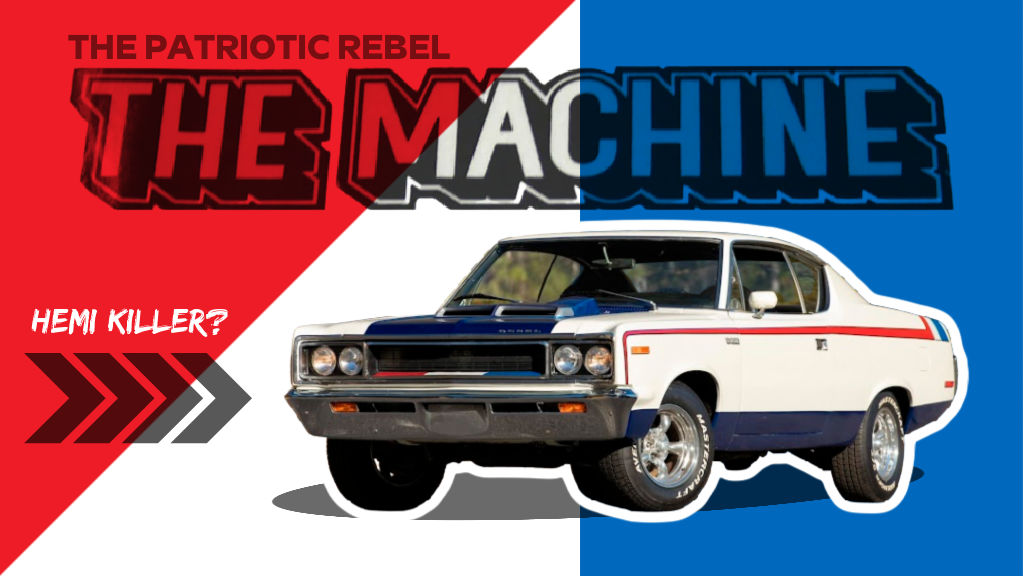
Never heard of the 1970 AMX Rebel Machine?
Picture this: it’s 1970, bell-bottom jeans are all the rage, and the groovy tunes of Led Zeppelin waft through the air.
In the midst of this psychedelic era, a renegade bursts onto the scene, defying conformity and leaving its mark on the golden age of muscle cars.
This rebellious soul with a patriotic paint job was none other than the 1970 Rebel Machine.
With a name like that, it’s hard not to envision this bold muscle car revving its engine, daring you to hop in for the ride of your life.
The Rebel Machine was an audacious, high-performance beast that roared its way into the hearts of young buyers looking to rebel.
So sit back, buckle up, and grab your platform shoes, because we’re about to dive deep into the history, design, and legendary status of this rock ‘n’ roll relic.
I’ll reveal what made THE MACHINE such an icon, why it still resonates with car lovers today, and how it managed to turn heads with its cheeky paint job and eye-catching features.
From its impressive speed to its one-of-a-kind style, this 1970 muscle car is a force to be reckoned with.
Let’s look closer at the 1970 Rebel Machine, a true underdog of the muscle car era, shall we?
Table of Contents
Rebel Machine Highlights
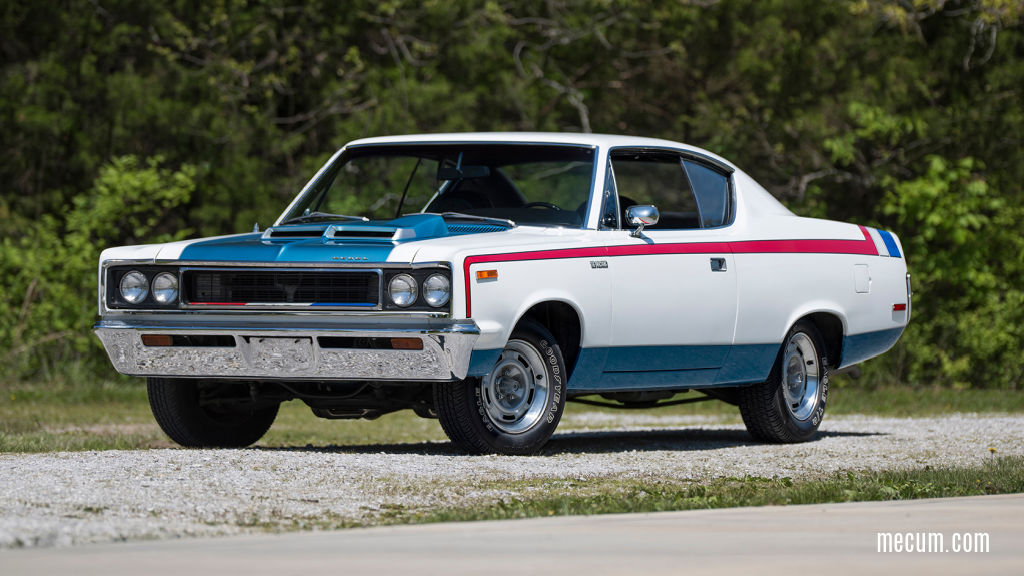
| Rarity | The Rebel Machine is a rare and sought-after collector’s item, produced only in 1970. |
| Patriotic Paint Scheme | The car’s distinctive red, white, and blue paint scheme on the first 1,000 units showcased American pride. |
| Production Figures | According to the 1970 Rebel Machine Registry, 2,326 units were produced. |
| Powertrain | THE MACHINE was powered by a 390 cubic inch engine, producing 340 hp and 430 lb-ft of torque. |
| Development | AMC partnered with Hurst Performance Research to develop the Rebel Machine, resulting in a high-performance vehicle that stood out from its rivals. |
Born to Be Wild
Despite the odds, American Motors Corporation (AMC) managed to carve out a niche with its innovative lineup of AMC muscle cars competing against the “Big Three,” which included models like the AMX, SC/Rambler, and the iconic “Rebel “Machine.”
The 1970 AMC Rebel Machine made a bold statement in the highly competitive muscle car market, debuting at the NHRA World Championship Drag Race Finals in Dallas, Texas, on October 25, 1969.
With a patriotic paint job and impressive performance, the Rebel Machine generated excitement among enthusiasts and captured the attention of the automotive press, showcasing AMC’s commitment to performance and willingness to take risks in pursuit of success.
“It’s not as fast on the getaway as a 427 Corvette, or a Hemi, but it is faster on the getaway than Volkswagen, a slow freight train, and your old man’s Cadillac.”
1970 AMC Rebel Machine Print Ad
AMC marketed the Rebel Machine as “the car you always wanted.” Despite its impressive performance and eye-catching design, the Rebel Machine faced stiff competition from well-established rivals in the muscle car market, like the Pontiac GTO, Dodge Charger, and Ford Mustang Mach 1.
Quick Specs
- Wheelbase: 114.0 inches
- Length: 199.0 inches
- Width: 77.2
- Weight: 3,650 pounds
- Price new: $3,475
Besides the impressive standard features, THE MACHINE offered a host of optional upgrades for added comfort and convenience. These included a cruise control system, an adjustable tilt steering wheel, and air conditioning.
The Rebel Machine’s limited success in 1970 led American Motors to try again in 1971. AMC switched to the Matador, calling it the Matador Machine, based on the newly designed Matador coupe with a 401 cubic inch V8.
However, the 1971 model year marked the end of the line for the high-performance Machine as AMC and other automakers shifted their focus to fuel economy and smaller, more economical cars. While the Matador Machine was still powerful, it failed to capture the same attention and excitement as its rebel ancestor.
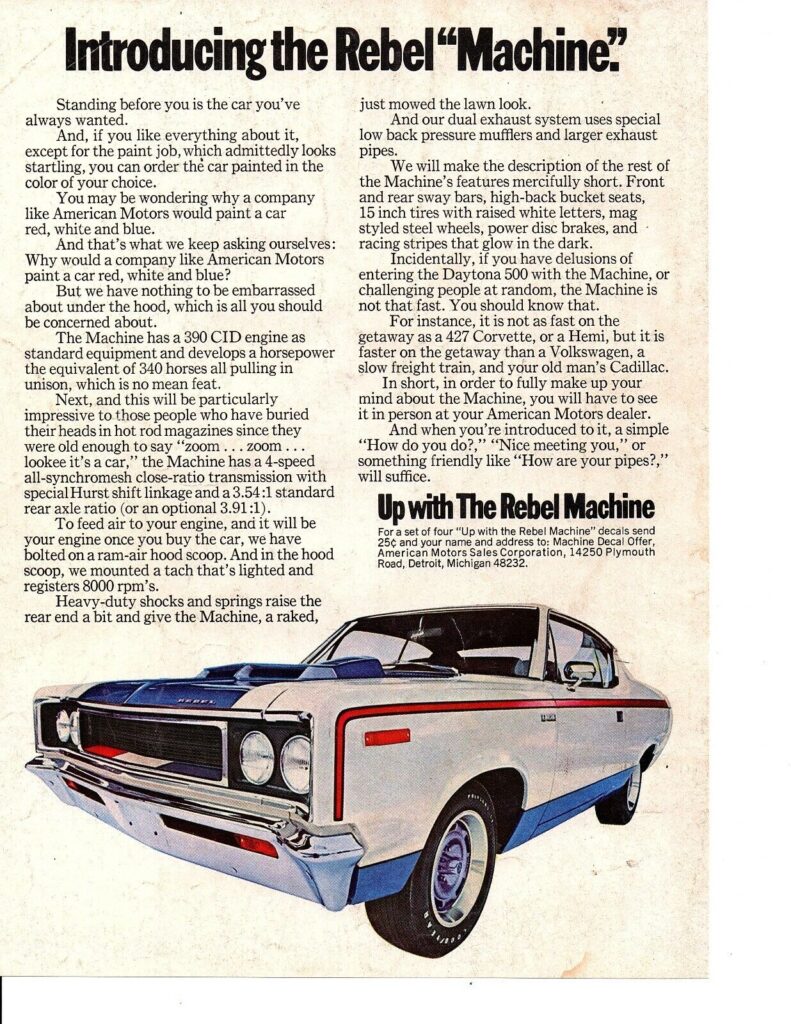
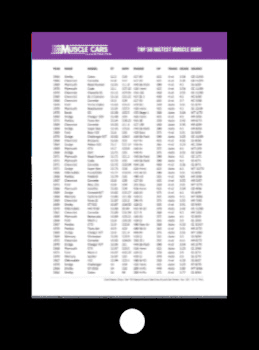
Get The Top 50 Fastest Muscle Cars chart. Includes year, model, engine, 1/4 mile times, and more—absolutely free!
Appearance
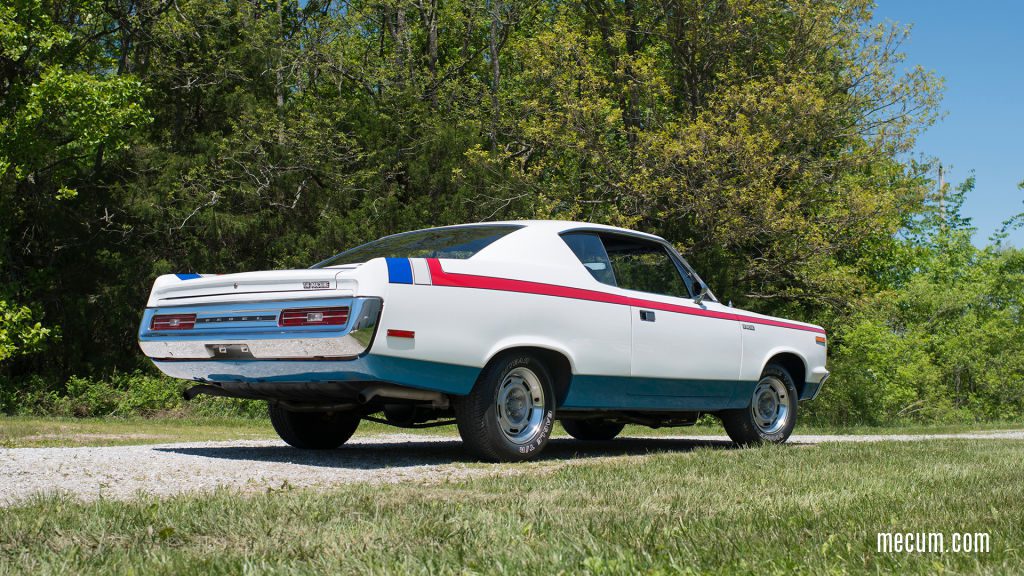
The Rebel Machine undoubtedly had a striking appearance, with its unique red, white, and blue paint scheme, 15″ Kelsey-Hayes wheels, and bold “Machine” decals.
While the first 1,000 units were painted in patriotic colors, the remaining 1,326 could be customized with any standard Rebel paint color and, later, any of the sixteen colors offered by AMC.
There were 20 paint colors available for the 1970 model year, including the Shadow Black and Phantom Gray. AMC used Acrylic Enamel to paint all of its cars in 1970, later switching to the Base/Clear method, which proved similar in quality but required additional steps.
| Color Code | Color Name |
|---|---|
| 25A | Frost White (P-72) /Electric Blue (B-6) + Red Streak Graphic Kit |
| B-6 | Electric Blue |
| P-1 | Classic Black |
| P-2 | Big Bad Blue |
| P-3 | Big Bad Orange |
| P-4 | Big Bad Green |
| P-8 | Shadow Black |
| P-39 | Matador Red |
| P-58 | Hialeah Yellow |
| P-72 | Frost White |
| P-79 | Bitter Sweet Orange |
| P-81 | Phantom Gray |
| P-82 | Bayshore Blue |
| P-84 | Commodore Blue |
| P-85 | Sea Foam Aqua |
| P-86 | Mosport Green |
| P-87 | Glen Green |
| P-90 | Golden Lime |
| P-91 | Tijuana Tan |
| P-94 | Moroccan Brown |
| P-95 | Sonic Silver |
As if its red, white, and blue paint job weren’t enough to turn heads, THE MACHINE also had other distinct features that screamed it was a muscle car through and through.
It had a protruding dual-snorkel hood scoop with functional ram air and an external calibrated 8,000 RPM tach, adding speed and style. It was all muscle.
Interior
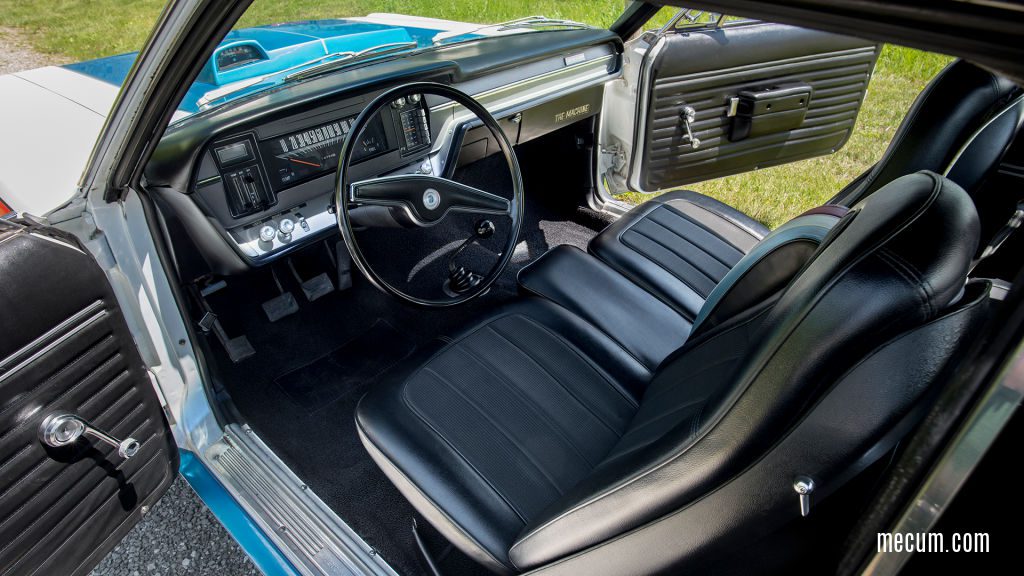
Inside the Rebel Machine, drivers were greeted with a functional and performance-oriented cockpit. Special gauges, a Hurst shifter, and distinctive trim elements ensured the driving experience was as exciting as the car’s exterior.
Handling
The suspension was designed with performance in mind that offered a tight ride and improved cornering capabilities with beefy rear coil springs from a Rebel station wagon and thicker anti-roll bars front and rear. The Rebel Machine even came standard with front power-assisted brakes to help it stop on a dime after racing between stop lights.
Performance
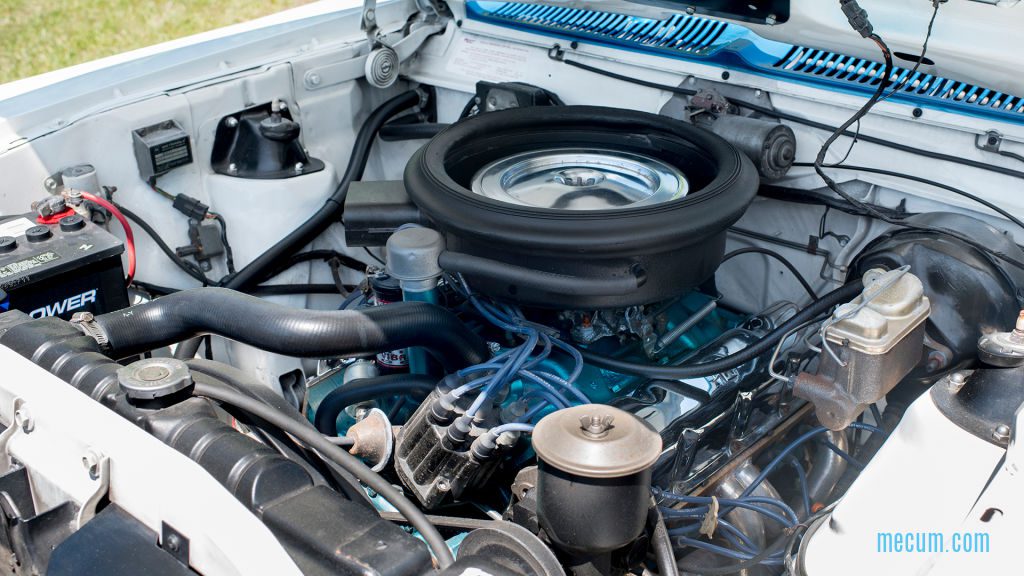
The 1970 AMC Rebel Machine was powered by a 390 cubic inch V8 engine that shared many components with the AMC AMX two-seater model.
Where it differed was that THE MACHINE had improved airflow, thanks to its unique heads, valve train, camshaft, custom intake and exhaust, producing 340 horsepower and 430 lb-ft of torque.
A heavy-duty radiator also improved the cooling system to ensure maximum performance under harsh driving conditions.
As for the transmission, a close-ratio four-speed Borg-Warner T10 manual with a Hurst shifter and linkage was standard, and an optional automatic transmission with a pistol grip shifter was also available.
The 3.54:1 gear ratio in a “Twin Grip” limited-slip differential was standard. Optional features included a 3.91:1 gear ratio or a 5.00:1 gear ratio for those that wanted better hole shots and quicker acceleration.
In the January issue of 1970 Super Stock and Drag Illustrated magazine, a Rebel Machine ran a quarter-mile in 14.40 seconds at 100.6 miles per hour.
A HEMI killer, it is not.
However, this put it on pace with the Plymouth AAR Cuda and Mercury Cougar Eliminator and even outpaced its sibling, the AMC AMX.
| Specification | Details |
|---|---|
| Displacement (Cubic Inches) | 390 |
| Horsepower | 340 @ 5,100 RPM |
| Torque | 430 lb-ft @ 3,600 RPM |
| Bore | 4.165 inches |
| Stroke | 3.574 inches |
| Compression | 10:1 |
Many unsatisfied with stock performance turned to Group 19—high-performance parts sold and installed through AMC’s independent dealer network.
These over-the-counter parts included Holley three-barrel carbs, forged crankshafts, cams, ignition systems, and more designed to boost horsepower and torque.
Other Group 19 parts, such as positive locking differentials and rear-axle gear sets, helped improve handling and overall performance.
With such a wide range of options available, it’s no wonder that many Rebel Machine owners turned to the AMC parts counter to take their Rebel to the next level.
Rebel Machine Dealer Education Video
Related Questions about the 1970 Rebel Machine
The exact number of 1970 AMC Rebel Machines produced is often debated. The National American Motor Drivers and Racers Association (NAMDRA) claims 1,936 were built, while the 1970 Rebel Machine Registry sources claim 2,326 were made. Either way, production numbers were low, and the car is rare.
The 1970 AMC Rebel Machine is powered by a 390 cubic inch engine, producing 340 horsepower and 430 lb-ft of torque.
The 1970 AMC Rebel Machine has a 390 cubic inch V8 engine from the factory.
At auctions, well-preserved 1970 AMC Rebel Machines with prices ranging from $55,000 to $145,000, depending on condition, originality, and documentation.
The 1970 AMC Rebel Machine got its name from a partnership between AMC and Hurst Performance Research, a company known for producing high-performance shifters. The Hurst branding inspired the car’s name and was intended to position the Rebel Machine as a powerful and competitive vehicle in the muscle car market.
Conclusion
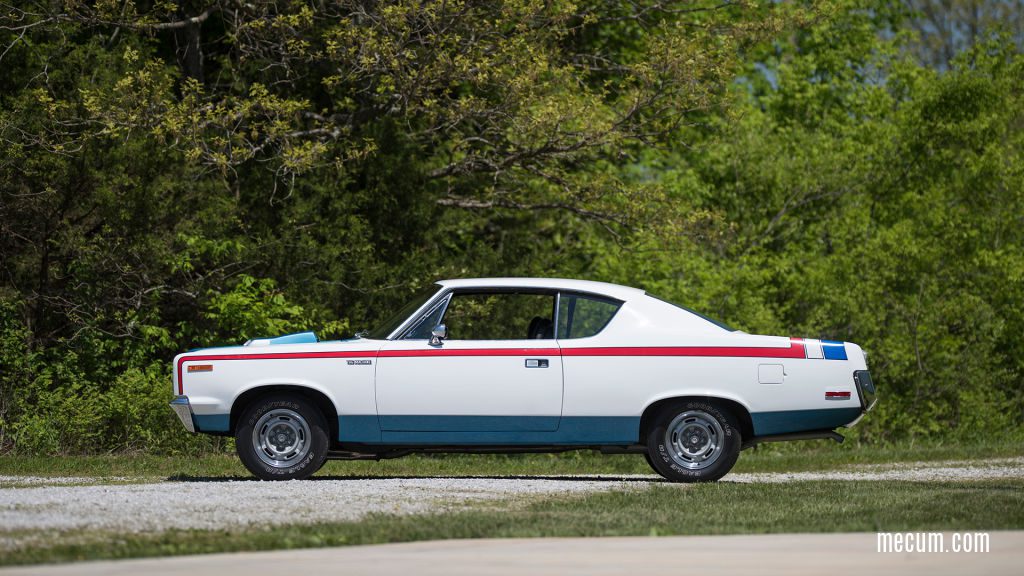
AMC released the Rebel Machine to compete with other high-performance muscle cars from Chrysler, Ford, and General Motors. It also established itself as a serious contender in the muscle car market. The Rebel Machine was designed to be a bold and distinctive vehicle that would stand out from the crowd and appeal to young buyers who craved speed and style.
AMC strived to boost its reputation as a high-performance auto manufacturer and, in hindsight, cement its place in the muscle car era. It may have been a little-known underdog, but the 1970 AMC Rebel Machine will always be a true champion of American Muscle Cars.

Ryan Wheaton
Ryan has owned muscle cars since 1986 and currently owns a 1972 Dodge Charger Rallye. He combines passion and experience to create engaging content for fellow muscle car enthusiasts. In 2018, he founded Muscle Cars Illustrated, authoring hundreds of articles on tips, history, and trends in the muscle car industry. He attends national car shows, auctions, and museums to stay current with the latest developments in the muscle car industry.Comments
Comments are closed.


Great stuff, Ryan. As a seventy year old man I really appreciate you bringing back these memories of my youth. Keep up the great work!
i am a amc lover.i have owned over 15 2 seat amx’s
and i still into amx parts.